Wednesday 16th August 2023, Nills Quarry, Pontesbury
If you are a regular reader of these ramblings you will know that on a couple of occasions this year we have played a game called “Hunt the Pooter”. It is very similar to the game of “Hunt the Thimble” but played with a larger “target” object – a pooter – in a much larger area – whatever site we are on.
The rules are very simple. Someone drops their pooter somewhere on site and then, sometime later, declares that it is missing. The rest of the group then enjoy going to look for it.
We have found this quite a hard game. So, it has been made a little easier by making the pooter more distinctive.
As yet we have not played the game again and it remains to be seen how effective the markings are.
Nills Quarry is situated on Nills Hill close to Poles Coppice on Pontesbury Hill. As the name suggests it is a former Quarry, from which Quartzite was taken. Quarrying ended in the 1950s and it became a landfill site. It is now an area of grassland and woodland, and, as the information board declares, a haven for moths when over 400 species of moths were recorded there in 2017.
The fun started early when the parking area we were expecting to use was not available. This meant that we had to park our cars in the site’s car park, which was designed for two or three at most. We arrived in six! And there was already a car parked there.
With expert help from our car park attendant for the day, we managed to get all the cars parked whilst leaving a clear exit for the other car to escape. (It was still there when we went home.)
As we entered the site, we came across a large expanse of rough grassland. Remarkably this area and the bordering woodland and features kept us entertained for most of the day.
This suited me as I was still not very mobile after my recent accident. I made my way slowly to a convenient picnic table where I could set up camp and wait for the other members of the group to bring me bugs to identify.
Very early finds on the vegetation close to the entrance were an Oak eggar moth larva;
 |
| Photograph: Nigel Cane-Honeysett |
And a Crucifer shieldbug.
 |
| Photograph: David Williams |
Birch and hawthorn trees situated close to the entrance yielded two shiedbug nymphs. The first was a Birch shieldbug;
 |
| Photograph: Nigel Cane-Honeysett |
And the second a Hawthorn shieldbug.
 |
| Photograph: Nigel Cane-Honeysett |
Venturing into the grassy area we found a Bishop’s mitre;
 |
| Photograph: David Williams |
And in some scrub we located a Common marbled carpet moth larva.
By now we had spread out quite widely over the grassland area. There was a band of low-lying bramble guarding the main area and walking through this was very tricky. Once the bramble had been bettered the rest of it was still difficult terrain as long grass and tall plants dominated the area. However, it turned out to be an excellent area for invertebrates.
Lying just beyond the picnic table was a pool.
Unfortunately the emphasis is on the “was”, as apart from a few puddles, it had dried out.
The lack of water did not stop a dragonfly from laying its eggs in one of the remaining puddles. Let us hope they manage to survive.
Another insect taking full advantage of the waterless pool was a Red admiral. This seemed to be using a dry bare stony patch as its resting area, returning to it regularly after venturing off to do whatever it had to do.
Another find around this time was a large orange picture-wing fly. This was identified later as Chetostoma curvinerve. This is only the second time it has been recorded in the county. Unfortunately I do not have a photograph but there are several on the internet.
Before we settled down to lunch, we noticed this conopid fly, Conops strigatus.
 |
| Photograph: John Martin |
Lunch over I suggested that the group might want to wander around the rest of the site leaving me to pass the time by the grassland. For some reason they seemed reluctant to go and most stayed and continued to look around the area where we were.
A few adventurers did depart. But when they returned their comments suggested that the grassland was the best part of the site from an invertebrate point of view.
What else did we discover in the grassland area?
Here are a few photographs:
A pseudoscorpion, Neobisium carcinoides;
 |
| Photograph: Nigel Cane-Honeysett |
A large hoverfly, Sericomyia silentis;
 |
| Photograph: David Williams |
A rove beetle, sorry I do not know the species but it is probably a Philonthus species;
 |
| Photograph: Nigel Cane-Honeysett |
A Small grass shieldbug;
 |
| Photograph: David Williams |
A wasp of the genus Ectemnius;
 |
| Photograph: Neil Nash |
And a Field grasshopper;
 |
| Photograph: David Williams |
Our woodland adventurers returned having found and photographed the following:
A gall on yew caused by the fly Taxomyia taxi;
 |
| Photograph: John Martin |
A silphid beetle, identified after the event as Thanatophilus sinuatus, that has only been recorded a few times within the county;
.jpg) |
| Photograph: David Williams |
The nymph of the stiltbug, Metatropis rufescens, found in a large patch of Enchanter’s nightshade;
 |
| Photograph: David Williams |
Some distinctive egg-sacs of the spider Paidiscura pallens;
 |
| Photograph: Nigel Cane-Honeysett |
And a Knopper gall, found on oak, caused by the asexual generation of the gall wasp Andricus quercuscalicis.
 |
| Photograph: Liz Roberts |
The day was drawing to and end and whilst a few of us were still wandering around we noticed that the picnic table area had become an irresistible attraction.
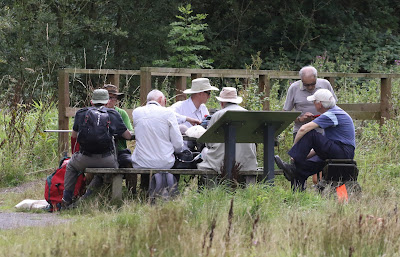 |
| Photograph: John Martin |
I am sure they were discussing the identification of the silphid beetle!!
We went to join them.
And then, it was time to go home, but not before we had seen this wasp, Gasteruption jaculator.
 |
| Photograph: David Williams |
This is a parasitic wasp that uses its long ovipositor to lay its eggs on the larvae in the nest of a solitary bee or wasp. When the eggs hatch, the hatchlings devour the host’s larvae and any provisions left in the nest.
Thank you to Shropshire County Council for allowing us to enjoy ourselves, and to the photographers whose excellent images illuminate this tale.








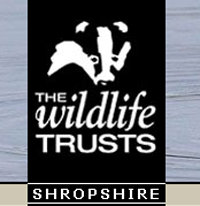

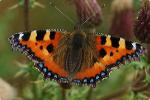




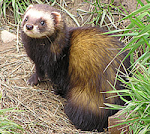

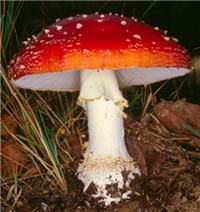












No comments:
Post a Comment
Please feel free to comment on this post...